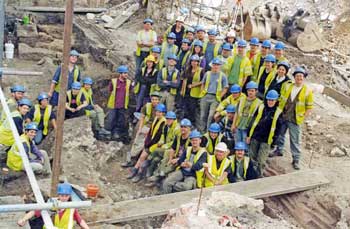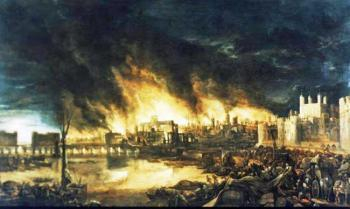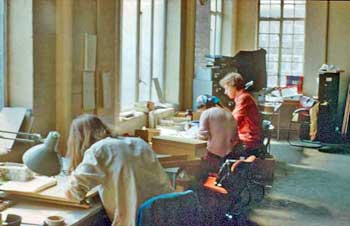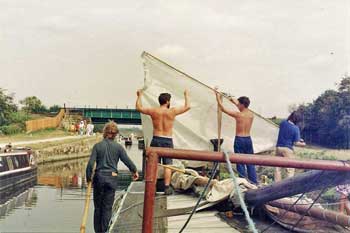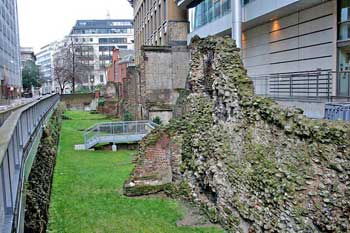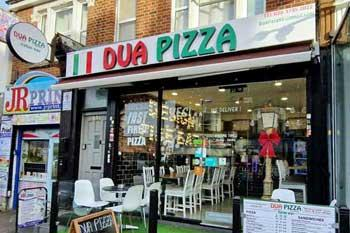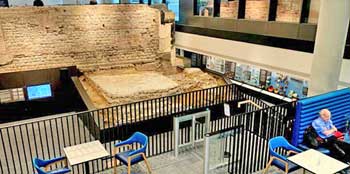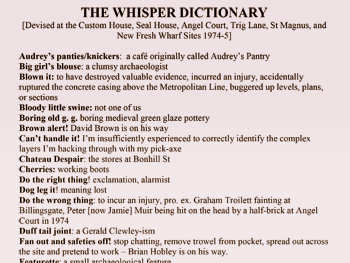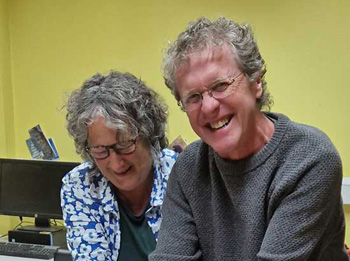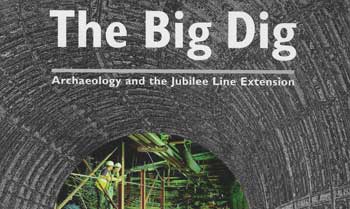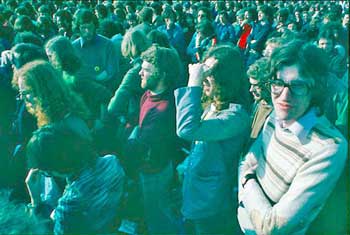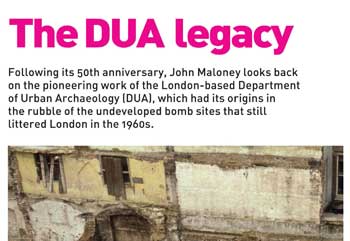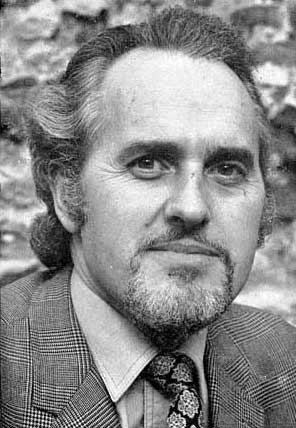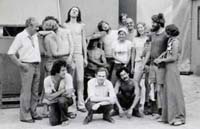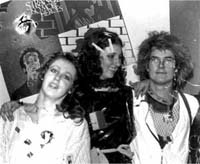The Phantom of Gresham Street
Ian Blair
The group photo that follows was taken in June 2001 during the excavation at 20-30 Gresham Street (GHT00) commonly known as Blossoms Inn.
TELLING TALES: a Baker’s Boy in Pudding Lane
Gustav Milne
One of the few dates in English history that every school person knows is “1666: the Great Fire of London”.
Bonhill Finds Dept 1974
Photos from Mike Rhodes
Bonhill Street, Shoreditch, EC2 (Now in Islington)
Trevor Brigham Days Out
Trevor Brigham
In 1991, in the dying days of the DUA, an intrepid group of Heroes set sail on the good ship 'June' into unknown territory - well, the River Trent - to search out new lands and have a last bash at experimental archaeology.
‘Reaching for the sky’: the pioneering aeronauts of the DUA
Ian Blair
In the formative early years of the DUA, most notably on Trig Lane (TL74), the ability to gain altitude to take aerial photographs was a problem that was overcome in a variety of ingenious, if now deemed ever-so-slightly unsafe ways.
1973: the Birth of the DUA
Gustav Milne
The ground-breaking Museum of London brought together the collections and expertise of the former London Museum (founded 1911) and the City’s own Guildhall Museum (founded 1826).
‘DUA Pizza’: in memory of Brian Hobley
Ian Blair
Life is often very circular it seems, or perhaps it is simply the way that my brain functions and the things that I perceive and the way that I process them. On Friday 8th December I was wandering along Hoe Street the main street in Walthamstow, an area that I and countless archaeologists past and present have set up home in over the years: due to the fact that it was once relatively affordable.
35, Vine Street, City of London
Major Roman defences discoveries revisited and redisplayed and now including a ‘mini-museum’
John Maloney
The Whisper Dictionary
Edited by Jamie Muir who writes,
"A lot of [misplaced] youthful energy went into the devising of the attached. Everybody had a hand. I don’t think it’s libellous."
Devised at the Custom House, Seal House, Angel Court, Trig Lane, St Magnus, and New Fresh Wharf Sites 1974-5
Shutters come down on MOLA photographic:
Maggie & Andy leave the building after long exposure
Ian Blair
Today was Andy Chopping’s last day at MOLA with Maggie Cox having left in recent weeks, both opting to take voluntary redundancy following the latest downturn in work and pursuant financial belt-tightening across the organisation.
‘Three strikes and we are out’: unionism and activism in London archaeology
Ian Blair
Forty-five years ago on the 30 April 1978, an estimated 100,000 people including archaeologists from the Department of Urban Archaeology (DUA) took part in a march from Trafalgar Square to Victoria Park co-organised by ‘Rock Against Racism’ and the ‘Anti-Nazi League’, which culminated in a concert headlined by the Clash and Tom Robinson.
DUA Legacy
John Maloney
Published in 'British Archaeology' Magazine January/February 2024

